9 Best Backpacking Backpacks for Women in 2024
This roundup of the best backpacking packs includes our favorites plus the most important factors to consider when choosing a pack for your multi-day adventures.

Despite what you might think, backpacking does not have to be painful. With the right backpacking pack, you’ll be able to enjoy your hike out in the backcountry without all that pain in your back, hips, and shoulders that many people experience due to poor-fitting packs. With this list of the best backpacking backpacks for women, you’ll be able to narrow down your search to find the best pack for you.
All of the packs listed below are comfortable, lightweight (some are even ultralight!), and have great features that make them tailored to women’s bodies, like smaller frames or back panels and narrower shoulder straps as well as hip belts that are shaped for a women’s anatomy.
At the end of this post, you’ll find more info on what features to consider, what capacity pack is recommended for different trip lengths, and how to measure the right fit so you’ll know how to choose the best backpacking pack for you.
Best Women’s Backpacking Packs at a Glance
- Bearfoot Theory favorite: Deuter Aircontact Core SL 45+10L (60+10L)
- Ultra-lightweight backpack: Hyperlite 3400 55L Southwest (40L / 70L)
- Best budget option: REI Trailmade 60
- Most comfortable pack for heavy loads: Gregory Deva 60 (70L)
- Best value: REI Co-op Flash 55
- Most weatherproof: Zpacks Women’s Arc Scout 50 L
- Best back ventilation: Osprey Aura 65
- Backpack with integrated daypack: Osprey Ariel Plus 60
- Best plus-size backpack: Gregory Kalmia 60
This post may contain affiliate links.
Save this post!
Enter your email & I'll send this post to your inbox! You'll also receive my weekly newsletter full of helpful advice for planning your adventures.
1. Deuter Aircontact Core
Bearfoot Theory Favorite
- What we like: Lots of storage space and pockets, back panel for ventilation, women’s-specific fit, carries heavy loads well
- What we don’t like: A little heavy, no rain cover
The Deuter Aircontact Core women’s pack comes in two capacity sizes for backpacking.
These packs are super comfortable and have padded, yet breathable, backing and straps.
I especially love how easy it is to stay organized with this backpacking pack. It has exterior stretch pockets for easy storage (handy for stashing an easily accessible layer or for wet items), the hip belt pockets, and the separate bottom sleeping bag compartment. The removable lid has an upper and lower pocket too.
I’ve used this pack on several trips including a 22-day John Muir Trail hike, my 10-day group trip to Alaska, and a Trans Catalina Trail backpacking trip. I’m still working towards going more ultralight but with my camera equipment, I need a pack that can carry a heavier load so I use their 60 + 10 L pack (70 L pack) – meaning the pack itself fits 60 L and the extendable pack collar fits another 10 L.
This pack is very supportive and the streamlined shape keeps the load close to your body. The back panel is also adjustable so you can move the straps up or down based on your torso length to get the perfect fit.
If you tend to carry lighter, smaller loads, BFT Team Member, Linda, uses the 45 + 10 L (55 L) version of this pack.
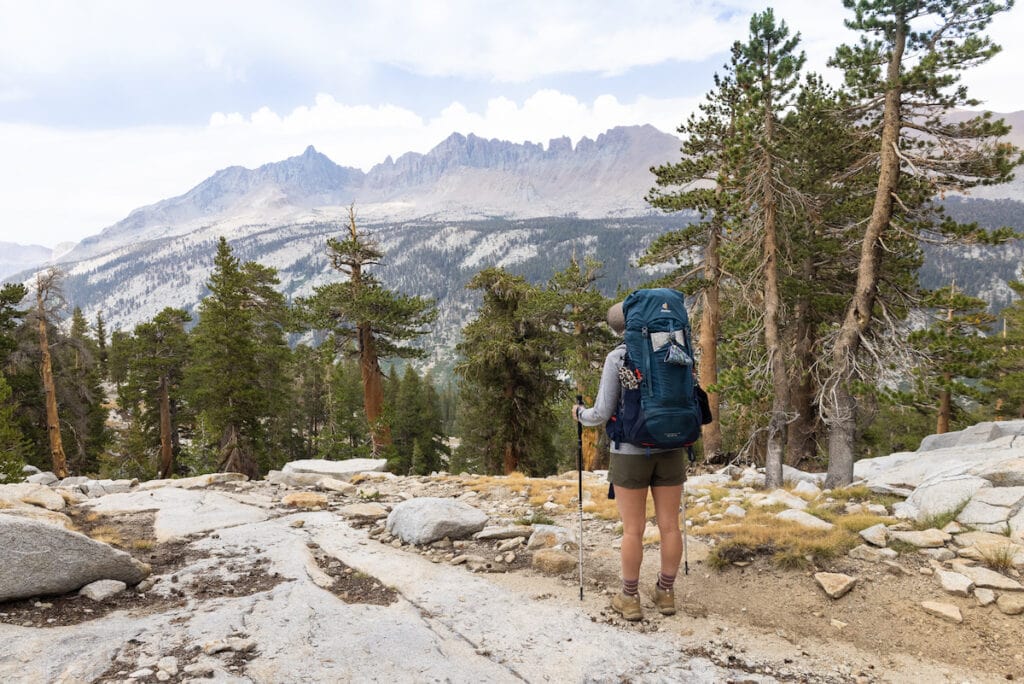
2. Hyperlite 3400 Southwest Backpack
Best Ultra-Lightweight Backpack
- What we like: Ultralightweight, waterproof, available in four different torso sizes, durable
- What we don’t like: No detachable lid, fewer pockets & organization than other packs on this list, not as comfortable with a heavy load
The Hyperlite Mountain Gear 3400 Southwest is a unisex backpacking pack that makes the top of our list as the best ultralight option.
Its weight capacity is 40 lbs which is high for an ultralight pack of similar sizes, although this pack is going to be most comfortable with less weight. Made out of ultra-strong Dyneema fabric, it is durable and waterproof yet lightweight.
I wore this pack on my Coyote Gulch backpacking trip and loved it. It comes in four different frame sizes (S, M, L, and T) and has handy features like hip belt pockets for easy access to essentials, three exterior pockets, and an internal mesh pocket for a hydration reservoir.
What’s extra cool is that this pack is made in the USA and it is waterproof so you don’t need a rain cover when backpacking in potentially rainy conditions.
It does not have a detachable lid or a lot of the bells and whistles that other packs on this list have, but that’s what makes it ultralight.
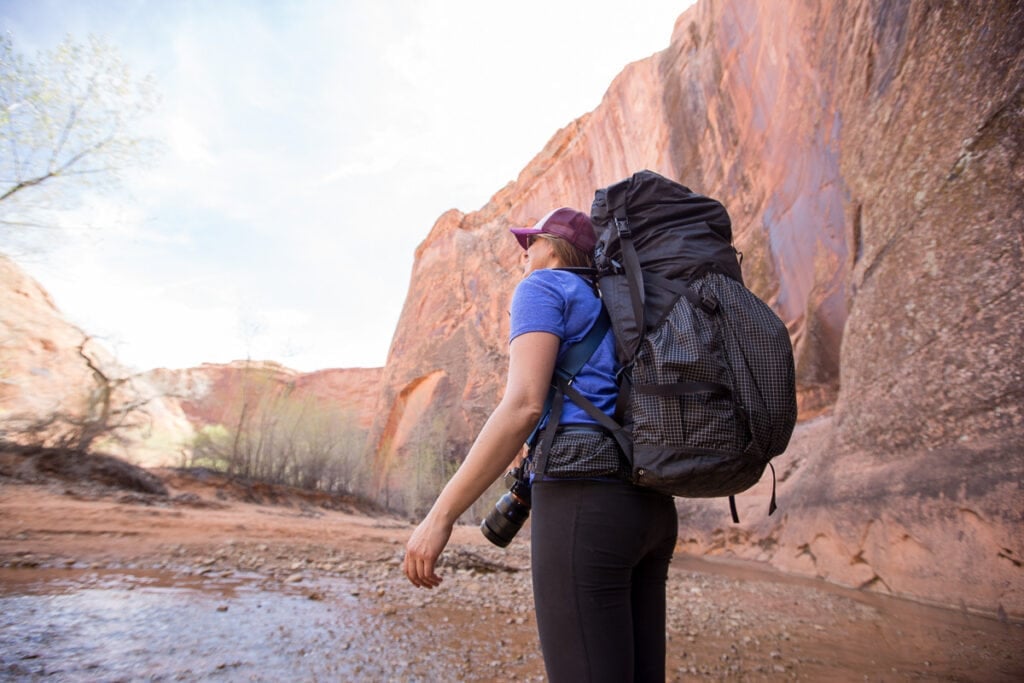
3. REI Co-op Trailmade 60
Best Budget Backpack
- What we like: Affordably priced, made with bluesign-approved materials, lots of pockets for organization
- What we don’t like: Heavier than other packs, bulky
The REI Co-op Trailmade 60 Pack is a great women’s-specific backpacking backpack on a budget.
At $149, it’s the cheapest pack on this list and one of the best-value backpacking packs out there.
For a 60L, it’s still relatively lightweight and it has a number of great features like a top-loading main compartment that cinches shut to keep your load balanced and compressed as well as external and hip belt pockets.
It also comes in an extended size for taller women or women who have a long torso.
The shell, straps, lining, and bottom are made using bluesign-approved materials, which we love!
4. Gregory Deva Backpack
Most Comfortable Pack for Heavy Loads
- What we like: Comes in three different torso lengths (XS, S, M), organization features
- What we don’t like: Very heavy
Gregory makes great packs overall and their Gregory Deva Pack is no exception. It comes in two different capacities – 60 L and 70 L – and each is offered in three different torso sizes so you’ve got lots of options to find the exact fit for you.
This pack is designed to provide amazing ventilation with the 3D mesh back panel providing 90% open airflow. It’s also got the always handy zippered bottom sleeping bag compartment as well as a full-body U-shaped zipper for easy unloading at camp.
One of our favorite features is the cleverly angled water bottle pocket that allows for quick and easy access to your water.
Gregory backpacking packs aren’t as streamlined as Deuter’s. While Deuter packs keep the load high and tight, Gregory packs tend to be shorter and wider when fully loaded.
This pack is also on the heavier side. At 70 liters, you’re already weighing in above 5 pounds when the pack is empty, but we’ve found that it does carry load weight really well.
5. REI Co-op Flash 55
Best Value Backpack
- What we like: Great price for a durable pack, removable Packmod Accessory System allows you to customize your pack size
- What we don’t like: Not suitable for backpacking trips requiring a lot of gear or food
The REI Co-op Flash 55 Women’s Backpack is a great choice for overnight backpacking adventures or shorter adventures with minimal gear. The 55 L pack comes in three torso sizes (XS, S, and M) and is designed to carry loads of 15-30 lbs.
It’s got all the features we expect the best backpacking packs to have like external side pockets, generous hip belt pockets, a hydration sleeve, and lots of pockets for organization.
Water bottle pockets are conveniently placed so it’s easy for you to reach your water bottle without asking a friend or taking the pack off.
The coolest feature of this pack, though, is the removable Packmod Accessories system. You can add or remove straps or pockets depending on the length of your trip and how much gear you need to bring.
For example, they have a pocket that attaches to your shoulder strap that can be used for a small camera, making it easy to snap those photos.
6. Zpacks Women’s Arc Scout 50L
Most Weatherproof Backpacking Backpack
- What we like: Ultra-lightweight, highly water-proof, short adjustable torso for women
- What we don’t like: Few pockets for organization
Zpacks is known for making ultra-lightweight and highly durable, weather-resistant gear. Their Women’s Arc Scout 50L Pack checks all those boxes and more.
At only 1 lb 3 oz, it’s super lightweight and thanks to its Dyneema fabric construction and taped seams, it’s also highly water-resistant. Zpacks still suggested putting your “can’t get wet items” in a dry bag, which Zpacks sells separately.
To keep the weight down, this women’s specific backpacking pack is pretty simple. There aren’t a lot of pockets or organizational features. However, Zpacks has a whole lineup of attachable accessories such as shoulder and belt pouches that are great for a camera, phone or snacks. They even have an umbrella holster.
Zpacks are designed and made in the USA, the price point is on the high-end, but if you’re looking for a well-made, durable, and weatherproof pack, you can’t go wrong with the Arc Scout.
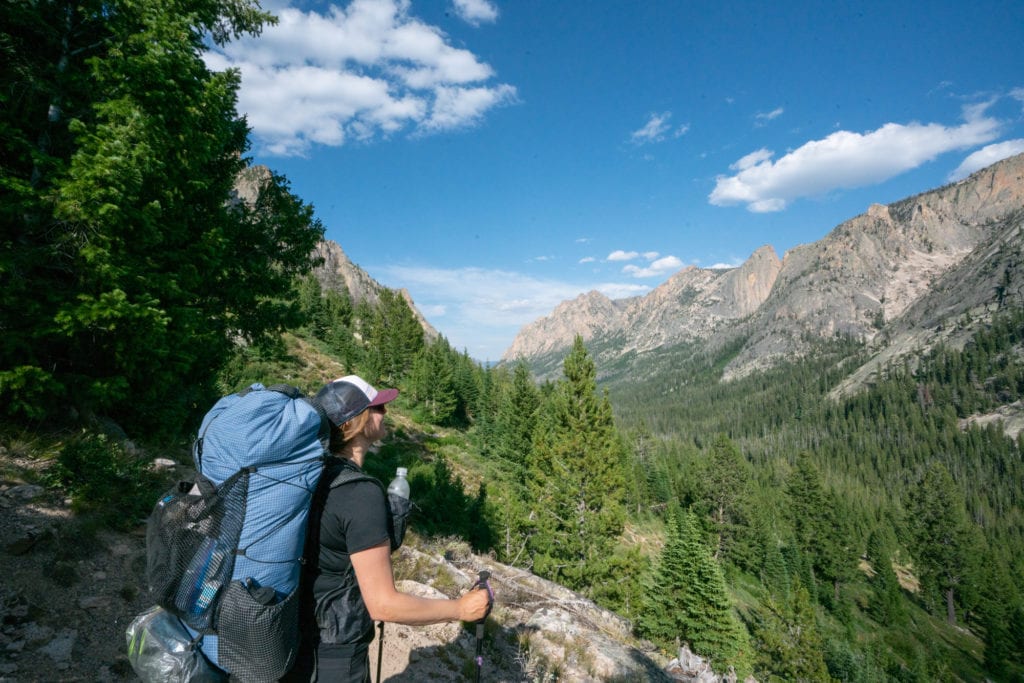
7. Osprey Aura AG Pack
Best Back Ventilation
- What We Like: Highly ventilated back panel, lots of pockets for organization
- What We Don’t Like: Heavier than other packs of similar size
Osprey makes some of my favorite daypacks, and their backpacking packs are also some of the most popular on the market.
The Osprey Aura AG Pack comes in two capacities and three sizes each and is one of the most comfortable, breathable options out there. What’s unique about this pack is that it has an “Anti-Gravity” mesh back panel that prevents the pack from sitting flat against your back so you get max ventilation. If you are hiking in hot summer climates and tend to get really sweaty, this is the pack for you!
It’s got all the features you want in a backpacking pack like a removable lid, external stretch pockets, hip belt pockets, and a bottom sleeping bag pouch.
If you want a lighter version, the Aura AG LT models shave a few ounces, but don’t have quite as many features.
8. Osprey Ariel Plus Pack
Pack with an Integrated Daypack
- What We Like: Feature rich with a removable day pack, integrated rain cover
- What We Don’t Like: Heaviest pack on this list
If you’re looking for one pack that has it all, the Osprey Ariel Plus Pack might just be the one.
It’s especially popular with world-trotting backpackers because it’s designed with an integrated and removable day pack that allows you to head out on short day hikes or trips while leaving the majority of your belongings behind.
The inside of the pack can be accessed via a zipper that opens up the entire front side of the pack, which also makes it easy to access gear that might be stuffed down in the center of the pack. It would also be great for trips into the backcountry where you will be setting up basecamp and going on day excursions.
The Osprey Ariel has an integrated rain cover that helps keep gear dry in wet climates, and it comes in three different capacity sizes as well as two different torso lengths, so you can get the perfect fit.
Because of all the features, this pack is by far the heaviest on this list of the best women’s backpacking packs. For that reason, we wouldn’t recommend it for people who are trying to hike far and light.
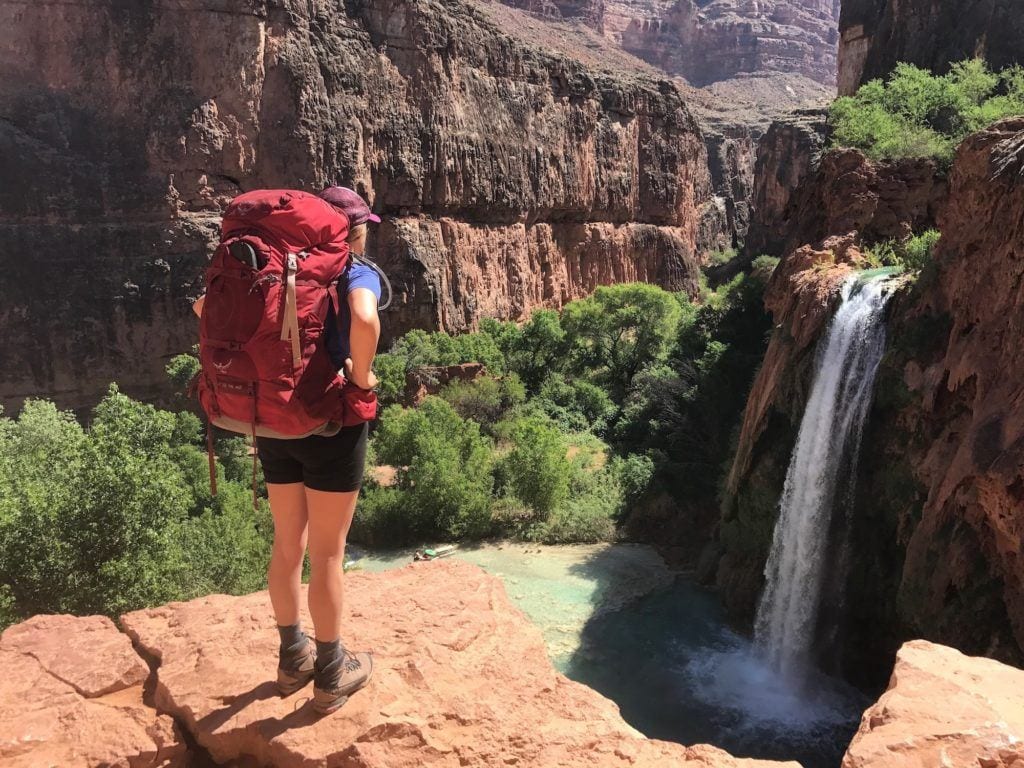
9. Gregory Kalmia 60
Best Plus Size Backpack
- What We Like: Specifically designed for plus-sized backpackers with wider shoulder straps, extended hip belt length, and other features
- What We Don’t Like: On the heavy side
The Gregory Kalmia backpack is a women’s-specific backpacking pack designed specifically for plus-sized bodies.
It features wider shoulder straps, a longer harness length, an extended hip belt, and other thoughtful designs that accommodate larger body frames.
We also love the ventilated FreeFloat 360 suspension system that provides excellent weight distribution even when carrying heavy loads as well as 360-degree mesh ventilation.
The pack also has a variety of organizational features, including a large main compartment, hip belt pockets, and multiple side pockets.
If you’ve struggled to find a women’s backpacking backpack that fits well and is comfortable, consider checking out the Kalmia.
How to Choose a Backpacking Pack
If you’ve ever walked into an outdoor store or browsed an online shop and felt totally overwhelmed by the number of options, you’ll know that choosing the best backpacking pack is more complicated than it seems.
With so many factors to consider, brands to choose from, and sleek styles vying for your attention it’s important to know exactly what you need and why you need it.
So, to help you find that perfect pack, here are the top things to know before investing in a good backpacking pack. We’ll cover what size of backpack you’ll need, what features are worth having, how to get fitted for a backpack, and more.
What Size Backpacking Pack Do You Need?
Backpacking packs are often measured in liters and cubic inches. Not sure how to make sense of these measurements?
Here’s a quick cheat sheet to help you pick the right pack based on the length of your backpacking trip:
- Daypack = 30 liters or less
- Weekend Pack (1-3 nights) = 30 – 50 liters
- Multi-Day Pack (3-5 nights) = 50 – 70 liters
- Extended-Trip Pack (5+ nights) = 70+ liters
A multi-day trip requires a pack with plenty of room for gear compared to a pack that only has the capacity for a small overnighter.
For reference, on my 10-day Alaska backpacking trip last summer, I used a 75-liter pack. For shorter 3-4 day trips, I try to use a backpacking pack in the 50-60 liter range.
By choosing a smaller pack, not only will the pack itself often weigh less, but it will force you to think about each and every item you are bringing, and as a result, your overall load will be lighter on the trail.
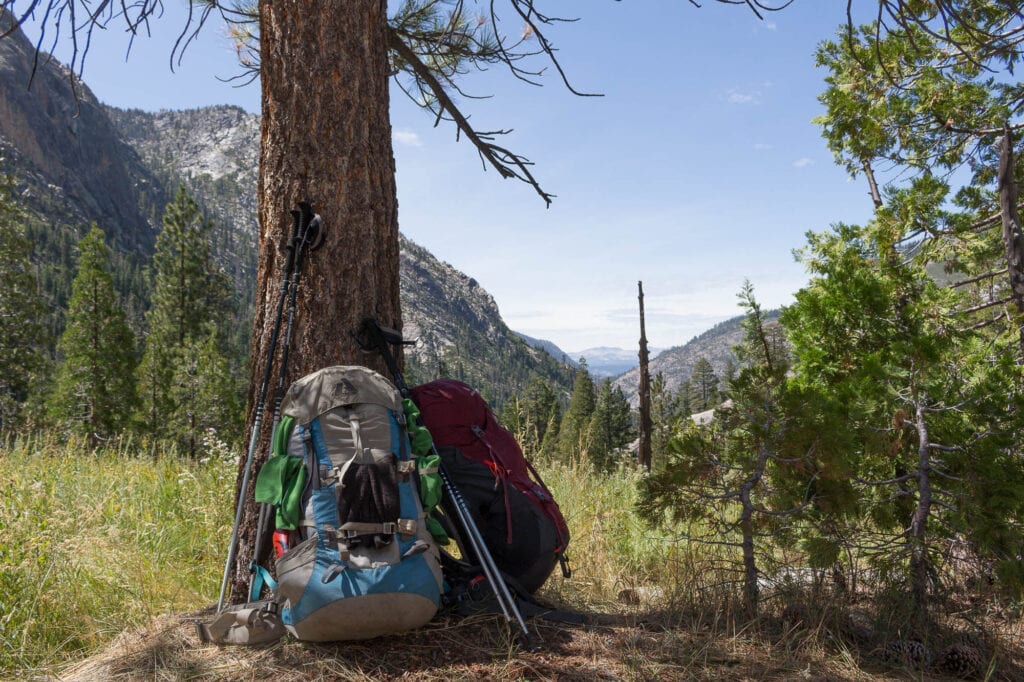
How to Measure Your Torso for a Backpacking Pack
A properly-fitting backpack means even weight distribution, comfort, and greater functionality overall.
Measuring your torso before you buy will help you find the perfect fit. Here’s how:
- Place your hands on your hips and locate the uppermost points of your pelvis or hip bones (the iliac crest)
- Draw an imaginary line across your low back between your thumbs and pinpoint that spot
- Tilt your chin down towards your chest and have a friend measure from the C7 vertebrae (at the base of the neck) down to the point where it intersects the line between your hips, and there is your torso measurement
You’ll want to purchase a pack that meets your torso length. Generally, all backpacking packs list a torso-length range in inches.
While you’ll want to choose the right size to start with, many backpacking packs have adjustable torsos which allow you to make micro-adjustments to the torso length.
How Heavy of a Load Are You Carrying?
Some packs are designed for heavier loads than others. In many cases, ultralight packs are intended for lighter loads and have lower carrying capacities.
But nowadays, the best ultralight packs out there like this Hyperlite Mountain Gear one can carry up to 60 lbs (although that is quite a heavy load to be carrying!).
If you overload a pack, it won’t wear as comfortably as it is designed to and can be more prone to tearing.
If you are new to backpacking, an ultralight pack might not be the best choice. You’ll need ultralight, compact gear (like an ultralight sleeping bag, pad, and tent) in order to fit everything in the pack.
All that ultralight gear can be expensive if you are starting from scratch. We recommend opting for one of the normal multi-day backpacking packs we suggest above for more helpful features and comfort.
Read next: Learn practical tips for going ultralight in our Ultralight Backpacking post.
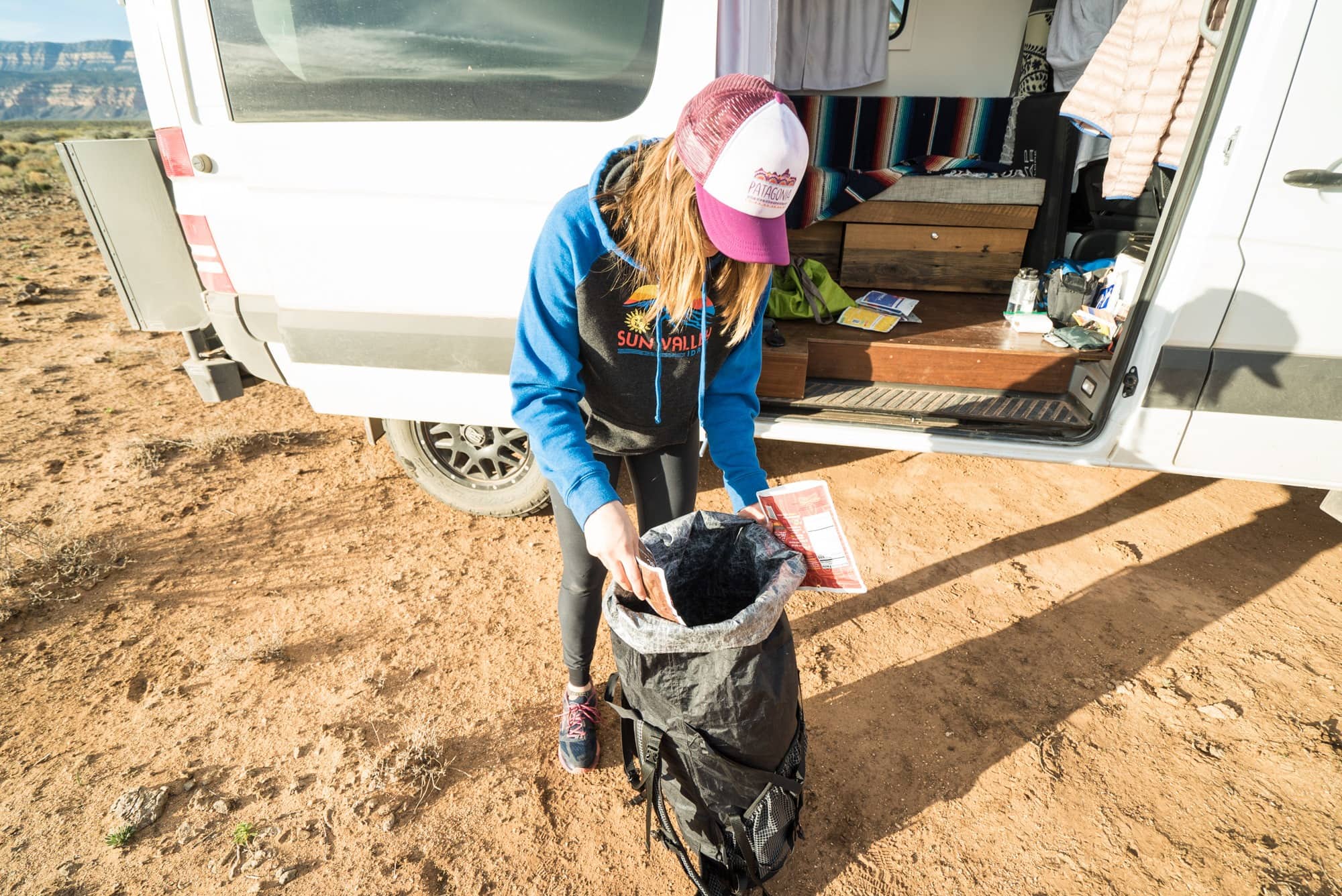
What Type of Trip Are You Going On?
Things like climate, location, and the type of gear you’ll be bringing with you can influence what backpacking pack is best for you.
If you plan on backpacking in climates where rain (or even snow) is possible, you’ll want a waterproof option or a pack that comes with a waterproof cover (unless you don’t mind purchasing one separately).
Packs often have loops and attachment points for different types of tools and gear like trekking poles, ice axes, and helmets.
Look for a pack that has what you need and nothing more so you can keep things lightweight.
Some packs have removable loops and straps making them more versatile so you can customize them based on your needs.
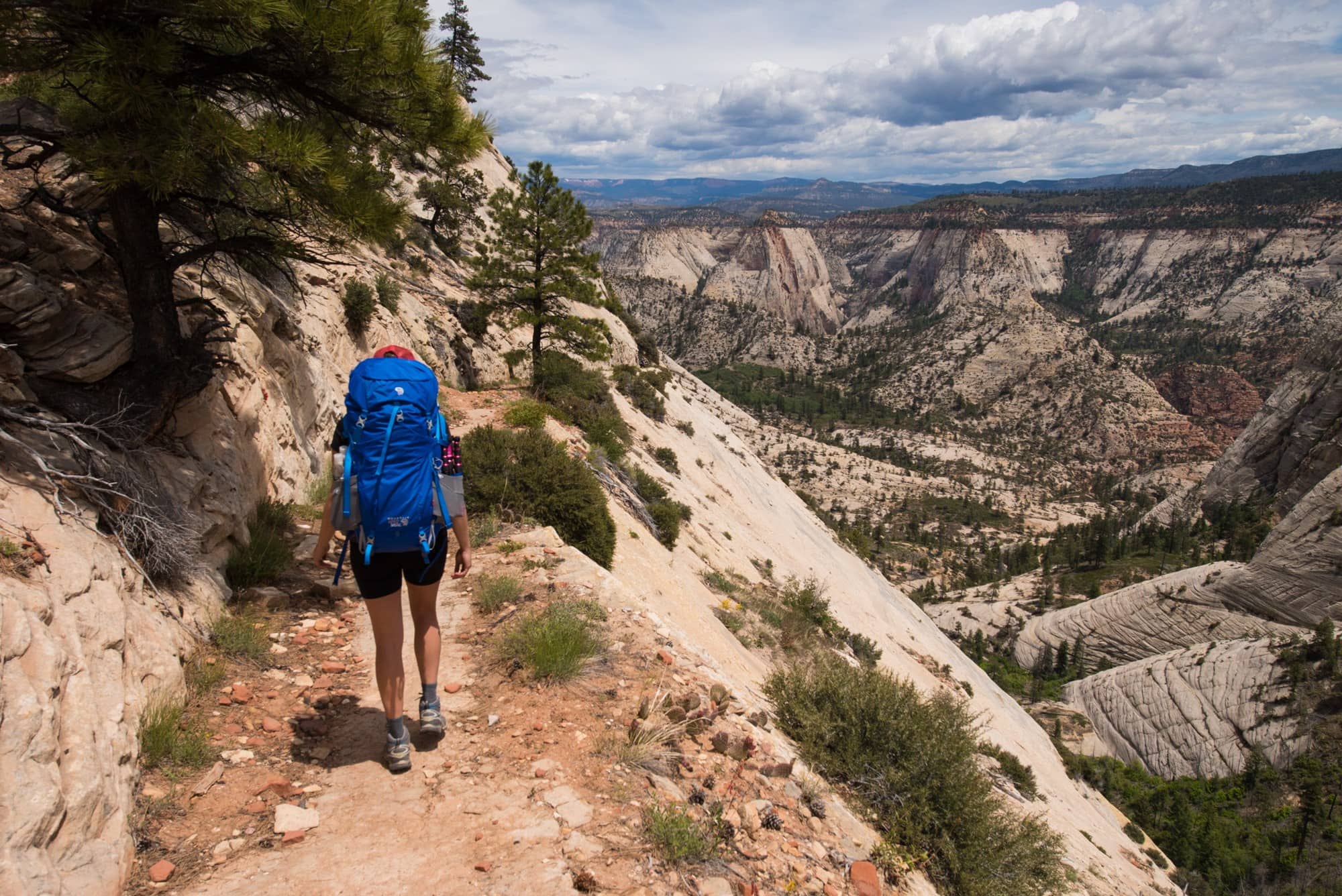
Backpacking Pack Features
The overall fit of the pack on your body is the most important factor when selecting a new backpacking pack but there are also a number of features to consider when deciding on the right backpacking pack for you.
Internal vs External Frame
External frames are (for the most part) a thing of the past. You won’t see them much anymore because they tend to be heavy and backpacking pack technology has progressed to the point where there are better, lighter-weight options.
Internal frames tend to be lighter and help evenly distribute the weight around your back and hip area.
They provide the wearer with greater stability and balance and help keep the pack closer to you.
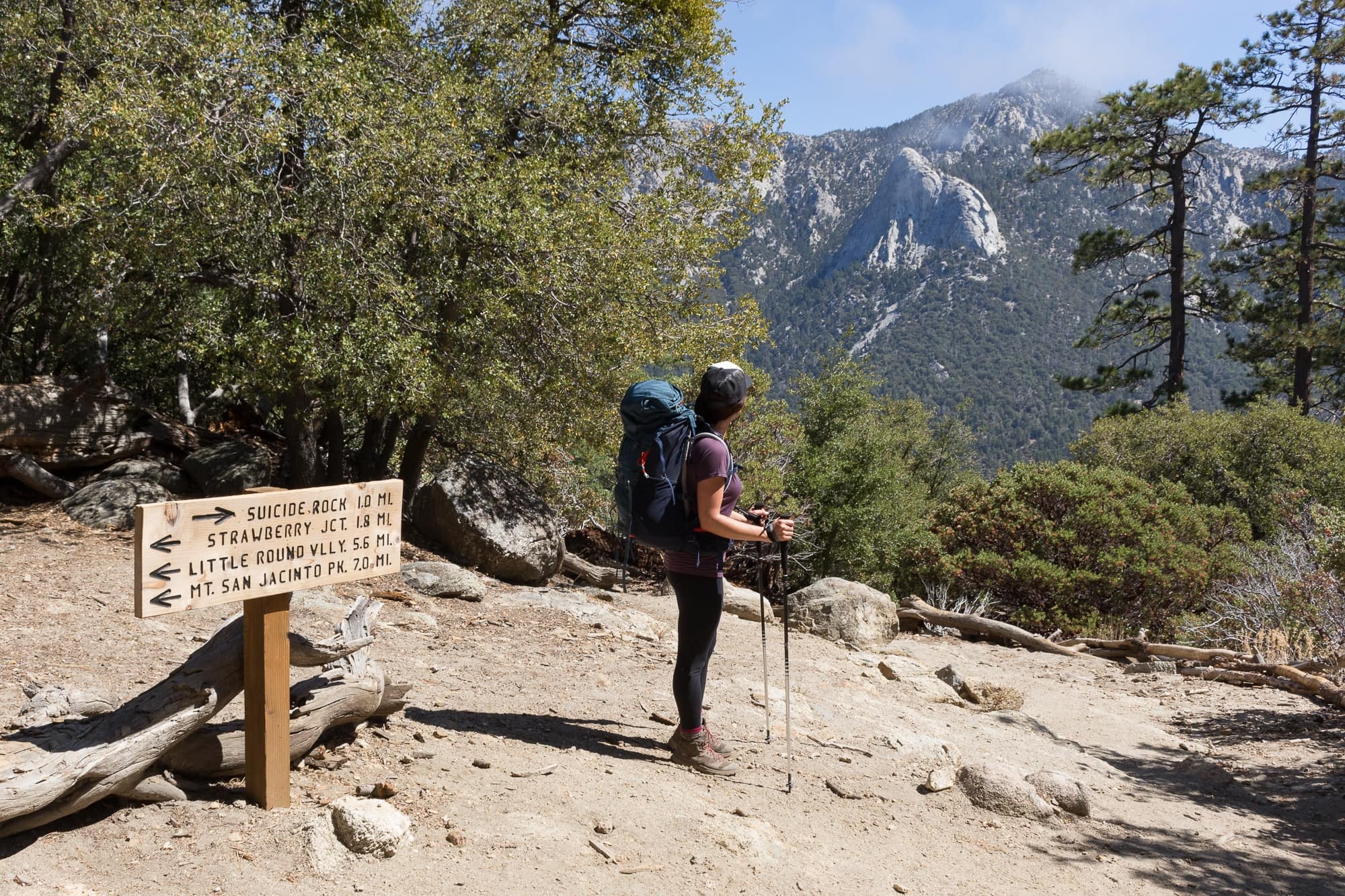
Internal Hydration Pocket vs External Water Bottle Pocket
The majority of backpacks on the market today (and all the ones on this list) have space in between the interior compartment and the frame to store a hydration reservoir.
Not familiar with the term?
A hydration reservoir is a plastic bladder that can be filled with water. It has a long tube attached so you can drink the water from the hydration pack as you hike rather than having to stop to dig out your water bottle. It’s a pretty nice feature that doesn’t add much extra weight.
Not everyone likes using bladders when they backpack (including me). A downside to hydration reservoirs is that with most packs if you need to refill the bladder, you have to unpack much of your pack to be able to pull the reservoir out.
Also, when the reservoir is full of water, it takes up valuable space inside your pack. The alternative is to use a side pocket to carry a few lightweight water bottles.
When you are trying on a pack, consider how difficult it is to reach your water bottle with the pack on. If you’ll mostly be hiking with friends, then you can have them hand you your water bottle.
If you’re solo, then you’ll want to be able to reach your water in the side pocket without help, otherwise, you’ll have to take your pack off every time you need a sip of water, which really interrupts your pace.
The Gregory Deva Backpack has water bottle pockets that are tilted forward for easy on-the-go access so if this is important to you that pack could be a great option.
Removable Top Lid
The top lid (also called the ‘brain’) on a pack adds easy-access storage for things to grab in a pinch, like your map, sunscreen, your phone, or snacks.
On most packs, you can remove the top lid if you don’t need it and want to save weight, or you can turn it into a makeshift daypack.
Some newer packs actually have lids that transform into usable daypacks.
Molded Hip Belt
Want a customized fit? Some brands, like Osprey, offer a molded hip belt for a better and more contoured fit.
If you’re purchasing the pack in-store ask an associate to heat and mold it for you. If you’re buying online, call up your local outdoor store to see if they offer the same service.
Floating or Pivoting Hip Belt
A newer feature that we’re starting to see in some backpacks is the floating or pivoting hip belt system which allows the hip belt to move separately from the pack.
This is almost like a suspension system that takes some of that extra pack movement off of you.
Ventilation
Hiking all day with a pack on your back can get hot so ventilation is key. To provide better breathability, some backpacking packs use open-cell foam and/or mesh lining on the back and shoulder straps.
Organizational Pockets
If you’re a person who appreciates a variety of organizational pockets over one big compartment, you’ll want to get a pack that has additional pockets in strategically-placed areas.
Many packs offer zippered hip belt pockets for easy access to smaller essentials like chapstick, sunscreen, or your phone.
Some backpacking packs also have external stretch pockets on the front and/or the sides which are great for quickly stashing an extra layer or storing wet gear.

Weather Proofness
Few packs on the market are fully waterproof so most require a rain cover which is a thin and durable layer that you can wrap around your pack to keep dry when the weather gets wet.
Unless you’re absolutely certain that it’s not going to rain, a rain cover is a good thing to throw in your pack when setting out on a backpacking trip just in case.
A few of the packs on our list are waterproof, like the Hyperlite Mountain Gear Pack and the Zpacks Arc Scout Pack. Some of the packs on our list even come with a rain cover, like the Osprey Ariel Plus.
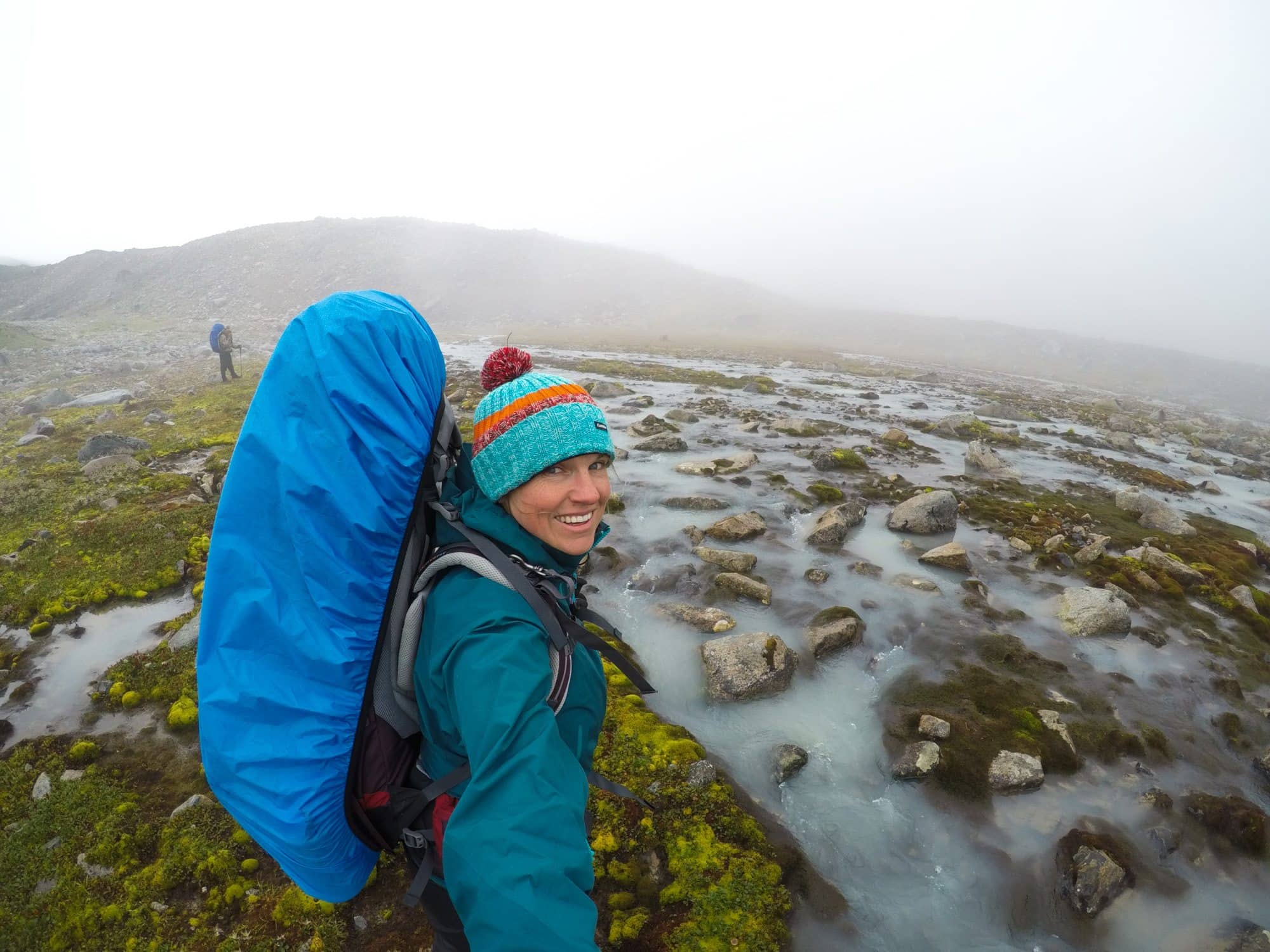
READ NEXT
Looking for more backpacking gear to keep you comfortable and safe on the trail? Check out our other backpacking gear round-ups:
What is the best backpacking backpack you’ve tried? What did you love about it and what would you change? Let us know in the comments below.


I’m wanting to get back into backpacking as it has been quite some time since I’ve gone. I’ll probably look for one that has a lot of organizational pockets. That way, I could take a lot of things with me and not have to worry about leaving something behind.
Hi Kristen,
I have read many blogs to find the information to select the best backpack. After reading your post I got useful information to dig it into my blog to solve the queries of my readers. You have explained each and everything in detail. What if you write an article over backpacks for a day hike it will be great to refer your finding to my readers. Thank you!
Hi Khalil,
Thanks! You’re in luck, we do have a blog post just like this to help you choose the best daypack for hiking! https://bearfoottheory.com/best-daypacks-for-hiking/ Check it out. Happy Trails!
Sometimes the “best backpack for women” is a male-specific pack. My wife has tried on most of the “women’s” packs and found none of them comfortable for her. She finds the shape of the straps to be uncomfortable and chafing. She has found men’s packs to be much more comfortable for her, such as the Osprey Atmos she uses now. I’ve known several women who have found the same through trial and error. Women need to be aware that the best pack for them might not necessarily be a female-specific or unisex pack.
That’s a great point, thank you for pointing that out. Everyone’s body is unique and what works for some might not work for others. Trying on a few different options in person is often the best way to find the right fit before purchasing.
I’m a small person, have a Gregory Diva pack as it was the best fit for me . I LOVE this pack!!! Once I have it on, I hardly know it’s there. Used it backpacking several times, so comfortable and easy . After years of packs not fitting, this had been such a wonderful experience!!!!
Glad you found a pack that works for you, Carol. Thanks for sharing!